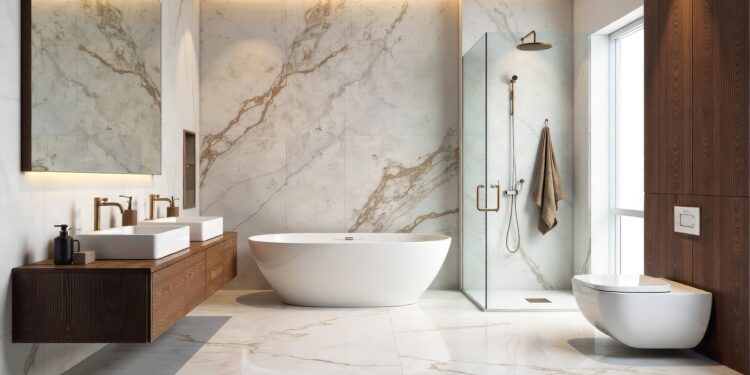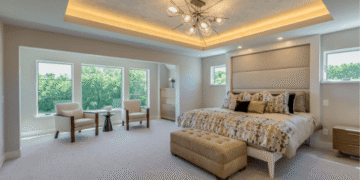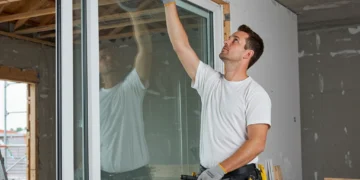You’re plotting another home improvement, and the bathroom is first in line. It could have been ages since the last revamp, or the space no longer feels functional the way it’s meant to. But once you start picturing what could change, the numbers start creeping up in your head.
Bathroom renovations often come with sky-high price tags that can quickly stretch your budget. The good news? It’s possible to expand and refresh the space without breaking the bank, while still maintaining quality.
Here are cost-saving bathroom renovation tips to help you get started:
Plan and Prioritize
Before the real job begins, map out what truly matters. Write down the changes you want to see and treat that list as your blueprint. Make sure each item is realistic in terms of space, budget, and time. Not every idea has to make it to the final plan, so decide early on which improvements are must-haves and which ones can wait.
This kind of upfront thinking keeps costly mistakes at bay. Once you’re clear on what matters most, the process also feels less overwhelming and more doable. Simply put, careful planning can turn a potentially chaotic home remodel into a well-structured project.
To get the most out of the planning stage, it pays to lean on seasoned hands. Reputable renovation services like Star Ceramics can offer budget-friendly custom designs to the table. They can also tackle your bathroom remodel project without sacrificing style or quality. Just be sure to review their track record and make sure their approach matches your vision.
Stick to the Existing Layout
Remodelling from scratch might sound thrilling. You get to redesign the room from the ground up. But the problem is that major systems, like plumbing and electrical wiring, would need to be moved. And with that come added costs and complications. In that case, keeping the existing layout often works to your advantage.
For example, replacing a single-sink countertop with a double vanity in the same spot enhances functionality without shifting plumbing lines. Storage, on the other hand, can often be added, too. Vertical shelves, recessed niches, or wall-mounted cabinets are a few simple solutions. They keep things organised while leaving the core of the room untouched.
Sticking with what’s already in place sidesteps delays and spares you from construction headaches. Even better, it frees up your budget for the things that matter most, such as finishes and features that elevate comfort.
Add a Soaking Tub
One might think that bathtubs only belong in grand or modern bathrooms because of their size. But a soaking tub is different. Its design is compact yet deep, designed to give you that full-body relaxation. It still delivers the same comfort as a larger freestanding tub without the oversized footprint or hefty price tag.

What makes this option practical is that it can often slip into the footprint of your existing tub. That way, you avoid costly rerouting of plumbing or major structural changes. It’s an indulgent upgrade yet still comfortably fits into a budget-conscious renovation.
Introduce a Corner Shower
Corners are often wasted space. Although they’re part of the bathroom, they rarely serve any real purpose beyond holding a bin or collecting dust. So, why not use that dead zone to your advantage and make it functional?
Having a corner or walk-in shower, for instance, can transform an overlooked spot into a practical feature. Instead of the room feeling boxed in, the layout could be more seamless and easier to move around. You can even add clear glass walls, and the space will feel brighter, lighter, and far less confined.
Note that you don’t have to build an entirely new shower to get this effect. If you already have a bulky tub-shower combo, think about reshaping it into the corner. You’ll be surprised at how much space opens up once the centre of the room is clear.
Switch to a Floating Toilet Design
When people think of bathroom expansion, the first idea that comes to mind is tearing walls down or pushing the footprint outward. But often, the smartest way to gain space without spending a fortune is by rethinking what’s already inside. A good example is swapping a traditional floor-mounted toilet for a wall-hung design.
This change works best for small bathrooms, as it clears up square footage, creates a sleeker look, and makes cleaning easier. It’s a subtle adjustment, yet it can completely shift how roomy the space feels without major construction.
Install Energy-Efficient Lighting
When tackling a bathroom upgrade, don’t overlook the lighting of the room. And since budget-friendly is the goal, energy-efficient fixtures are an easy win here. They trim your power consumption while letting you play with brightness and ambience.
LED lights are among the best examples. They use a fraction of the power of traditional bulbs and last years longer. That means fewer replacements and less money spent over time. But the real impact comes in how you style them. Layering is key:
- Install a ceiling fixture for overall brightness
- Add sconces or vanity strips to frame the mirror
- Finish with accents like under-cabinet lighting or a backlit mirror for a spa-like glow
If your bathroom has a window or skylight, use that to brighten the space. Natural light softens the space in ways bulbs never can. Pair it with efficient fixtures. You then get a balance that feels fresh during the day and calming at night.
Wrapping Up
Bathroom remodelling doesn’t always have to mean tearing everything apart or spending a fortune. You just need to be creative and plan with intention. Also, be sure to work with professionals who can guide your vision and bring real value to your home. You’ll end up with a refreshed bathroom that feels personal, practical, and comfortably within your budget.












